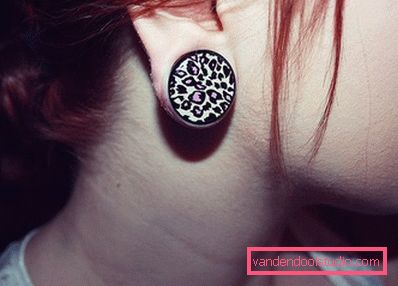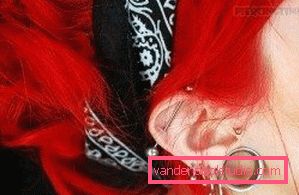Ear tunnel

The emotions that people experience when seeing tunnels in their ears are different, both negative and positive. In order for you to decide whether to do this procedure for yourself or not, familiarize yourself with all of its parties, we have posted this article.
How is the procedure?
There are 3 types of execution techniques:
- The hole is made using a scalpel.
- The earlobe is cut
- Gradual expansion of the puncture.
The first technique is chosen by extreme people who want to have a huge tunnel. The incision is made under anesthesia, with this method there is the possibility of rupture of the lobe. The technique of cutting lobes is used very rarely. This method is chosen by people who want to get a tunnel as soon as possible and have an accurate idea of the size of the hole. The latter kind is ideal for people who prefer not to rush, with such a technique, an increase in the size of the hole occurs gradually. That allows you to gradually determine the size you need.

Varieties of tunnels
Earring, you can choose different variations. After completing the puncture and waiting for healing, a dilator of 3 mm is passed through to the future tunnel. After that, proceed to a gradual expansion to the desired size. The most accurate and common types of tunnels are:
- The tunnel with a diameter of 5 mm is quite miniature.
- Tunnel 8 mm is the most popular type, attracting the attention of others.
- 10 mm - for brave men, a puncture occupying the whole lobe, it can not be overlooked.
Aesthetics appearance
This type of ear jewelery is far from being understood by everyone around them, often owners of such jewelery are accused of inadequacy and unnecessary extremes. If you recall, then this procedure was performed by people in ancient times, and was a worthy decoration along with earrings, clips. And if you do not make the tunnel of incredible size of 5 cm, and choose a more modest option, then they can look neat and unusual. And if you decide to get rid of them, then there will be no problems with the removal. Here you can dispel the view that the tunnel is forever. If you make it small up to 1 cm, it will grow over by itself, leaving a barely noticeable scar. Such healing is possible with a tunnel width of up to 3 cm, but it will take a little more time and, as a consequence, a small scar. The difficulty will arise with a hole in the diameter of 4-5 cm, while the earlobe will have to be cut and hemmed. After this procedure will remain a significant scar.
Care
With proper care, which the master will tell you, you will avoid
